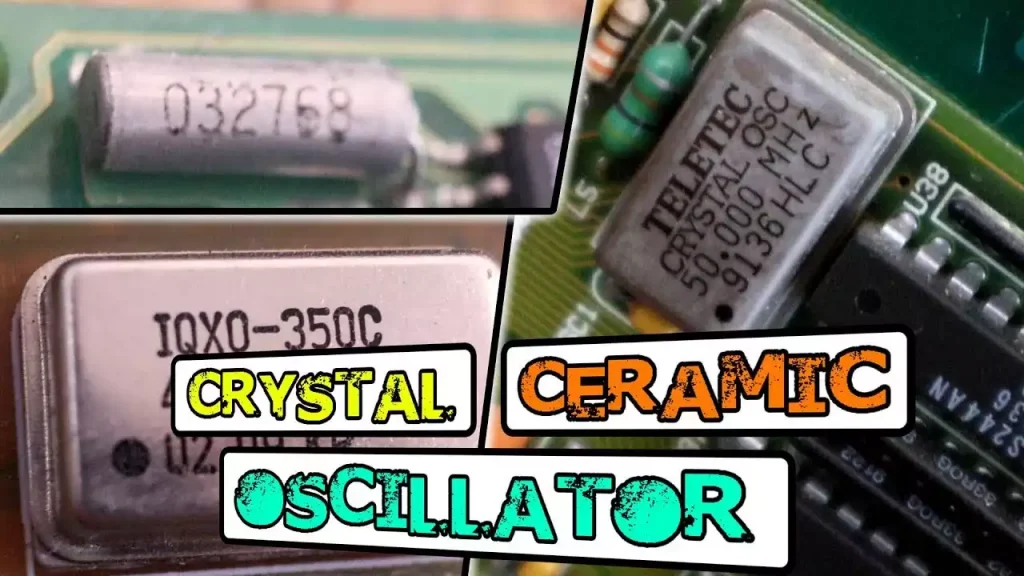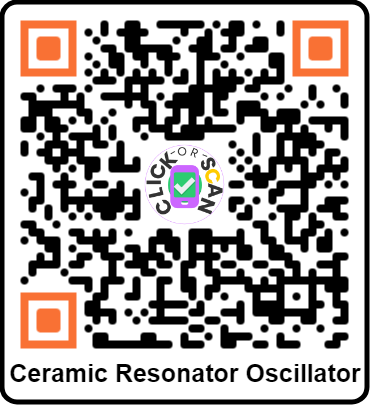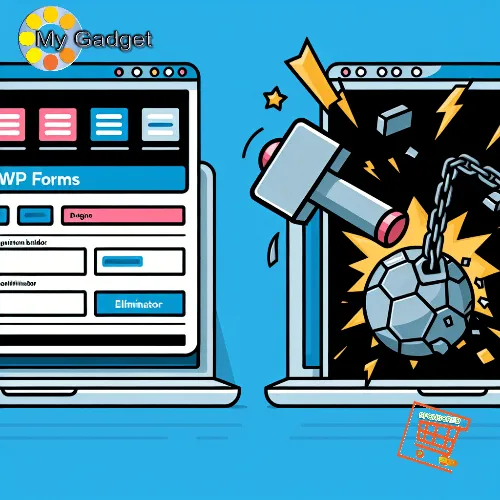Ceramic Resonator Oscillator plus Microprocessors
In the rapidly evolving world of technology, Field Programmable Gate Arrays (FPGAs) have emerged as a powerful tool for engineers seeking flexibility and efficiency in hardware design.
This adaptability allows for quick iterations and modifications, catering to the needs of industries ranging from telecommunications to automotive systems.
To leverage the full potential of FPGAs, understanding the programming languages SystemVerilog and VHDL is crucial.
These languages not only provide unique capabilities but also reflect a rich historical context that shapes their application, making them indispensable for modern hardware solutions.
This comprehensive guide aims to unravel the complexities of FPGA programming by exploring key concepts, comparative analyses, and advanced practices, equipping you with the knowledge needed to innovate and excel in your projects.
Table of Contents Ceramic Resonator Oscillator plus Microprocessors
Understanding FPGA Architecture
In today’s tech-driven world, FPGA (Field Programmable Gate Arrays) architecture stands as a cornerstone in the design and development of modern systems.
Grasping the details of FPGA architecture is not just about the ability to bring ideas to life; it’s about mastering the art of resource optimization in hardware design.
When diving into FPGA programming, developers harness the power of languages like SystemVerilog and VHDL.
These potent tools enable the meticulous expression of digital circuit design patterns and principles, which is essential for synthesizing complex systems, such as a VGA controller.
The knowledge of FPGA architecture lays the groundwork for exploring advanced design concepts.
Mastery of this subject allows one to manipulate design tools and methods, such as Introduction to AXI, to achieve parallelism and pipelining—key attributes for High-Speed SoCs (System on Chips), boosting the performance of your design projects.
By understanding FPGA architecture, engineers are endowed with the methodical design skills required to excel in hardware design prowess.
This expertise paves the way for innovation and the efficient realization of intricate hardware systems, securing a place at the forefront of technological advancement.
Overview of SystemVerilog and VHDL
In the realm of FPGA programming, the acumen for SystemVerilog and VHDL stands not merely as an option but as an imperative.
Mastery of these languages is tantamount to holding the keys to a kingdom where robust and efficient hardware circuits are the ruling power.
Imagine the versatility at your fingertips; from the simplest applications to the most ambitious innovations, these languages lay down the path for seemingly boundless possibilities in FPGA development.
As you hone your programming skills through practical projects such as sculpting VGA controllers or architecting microprocessors, you’re not just building circuits; you’re crafting legacies.
The journey of understanding that begins with the FPGA architecture and seamlessly weaves through tools and design principles, is critical.
It’s this profound expertise that morphs the intangible whisper of an idea into the resounding reality of tangible, impactful hardware solutions.
The magic lies in the real-world applications.
Projects like CPU and calculator developments are not mere exercises; they are the sharpening stones for your skills, enhancing your FPGA programming expertise with SystemVerilog and VHDL.
Hence, for those driven to excel, the dedication to learning these languages is more than a challenge; it’s a promise of transformation – from apprentice to master in the art of tangible creations.
Historical Context and Evolution
The advent of Field Programmable Gate Arrays has signified a quantum leap in our ability to engineer modern systems, proving that FPGAs are not mere components; they are the foundation on which today’s tech marvels are built.
The historical trajectory of SystemVerilog and VHDL mirrors the evolution of our collective technological prowess.
From humble beginnings controlling LEDs, these programming languages have revolutionized our capability to execute complex operations, such as spearheading microcontroller implementations.
In this progressive march, understanding the architecture, tools, and design principles of FPGAs has been constantly underscored as the linchpin for leveraging their sheer versatility.
This guide is a bridge between theory and application, a conduit that transforms historical knowledge into hands-on expertise—expertise that is instrumental in developing robust and efficient hardware circuits across a plethora of projects and applications.
Key Features of SystemVerilog
SystemVerilog, an amalgam of high-level abstraction and meticulous detail, is indispensable in the development of sturdy and efficient hardware circuits.
It stands as a beacon for programmers who wish to embark on a journey through the FPGA world with an array of practical projects, from VGA controllers to calculators, waiting to be explored.
One cannot overstate the importance of SystemVerilog’s integration with VHDL, as it magnifies the spectrum of opportunities within the field of FPGA design.
The hands-on experiences garnered through real-world projects are not just exercises; they are formative experiences that deeply ingrain an understanding of FPGA architecture and implementation.
For those who seek to innovate, SystemVerilog isn’t merely a programming language; it’s a canvas for inspiration and a framework for hardware solutions that can redefine the future.
Key Features of VHDL
VHDL stands as a cornerstone of FPGA programming, a language that facilitates the construction of robust and efficient hardware circuits with an efficacy that resonates across the design realm.
A masterful grasp of VHDL equips developers with a passport to a world of opportunities, where the versatility of systems design is both an adventure and a destination.
The skillset honed through VHDL programming is a treasure trove for those wanting to delve into diverse projects ranging from microprocessor development to system integration.
This wealth of knowledge is the foundation upon which practical projects are realized, fostering experiences that culminate in real-world applications.
And within the nuances of VHDL lies the mastery of design principles and tools—tools that are instrumental in the act of creation, turning whispers of imagination into the resounding anthem of functional hardware.
Comparative Analysis of SystemVerilog and VHDL
In the arena of FPGA design, the dueling champions are SystemVerilog and VHDL.
Both wield colossal importance in the genesis of modern systems, playing pivotal roles in fostering robust and efficient hardware circuits.
To navigate the complexities of FPGA-based projects, immersion in the nuanced features of each language is imperative.
To put it plainly, mastering both SystemVerilog and VHDL is synonymous with having a master key to the vast world of FPGA applications.
Each language has its unique strengths.
SystemVerilog, with its origins in Verilog, offers an enhanced syntax that simplifies design and verification.
It is tailored for complex hardware modeling and validation, making it the darling of High-Speed SoCs.
VHDL, on the other hand, is meticulous with its strong typing and deterministic simulation model, promoting precise and reliable hardware descriptions vital for safety-critical systems.
The FPGA Programming Handbook concretely propounds that hands-on projects are the proving grounds for these languages, imparting practical skills that have direct applicability in the real world.
Command over both languages caters to a more holistic understanding of FPGA architecture, which is essential for the seamless transformation of ideas into tangible hardware solutions.
Notably, both languages are powerful conduits for tapping into a plethora of opportunities, from digital circuit design to systems that propel us into the space age.
A comparative analysis thus reveals that the choice between SystemVerilog and VHDL is not about superiority, but suitability — selecting the right tool for the right job to bring about immaculate hardware design prowess.
Performance Metrics
Mastering FPGA design intricacies goes hand-in-hand with grasping the critical performance metrics that define the architecture’s capabilities.
Proficiency in SystemVerilog and VHDL plays a decisive role in crafting circuits that not only meet design objectives but also exceed performance benchmarks.
Pipelining and parallelism emerge as vital principles in modern FPGA projects, furnishing the groundwork for high-performance systems that can capably handle complex tasks like Video Graphics Array (VGA) controllers.
Such applications necessitate meticulous attention to performance metrics to deliver efficient operation without compromising on throughput or speed.
Through real-world applications—be it simplistic calculators or intricate microcontroller environments—developers can assess and incrementally refine these metrics.
Each project becomes a stage, where theoretical knowledge is translated into measurable performance improvements, thereby cementing one’s reputation as a proficient FPGA developer in today’s tech-driven landscape.
Code Complexity and Readability
As any artisan knows, mastery is evident not just in functionality but also in form.
In the realm of FPGA programming, this translates to code that is robust, streamlined, and, above all, legible.
SystemVerilog and VHDL stand as gatekeepers to this domain, where decoding complexity and perfecting readability becomes paramount.
Real-world projects serve as practice arenas, challenging the developer to construct clear, organized, and efficient code.
Whether it’s a VGA controller with an intricate logic grid or a bespoke microprocessor, each line of code is a brushstroke in the larger design tapestry.
Moreover, the move from theory to praxis is emphasized, with the understanding that practical application is the crucible in which better coding practices are forged.
Incorporating design patterns and actively engaging in practical FPGA programming ventures are crucial.
They teach developers the art of balancing complexity with clarity, ensuring that every new project propels their design skills to greater heights.
Toolchain and Ecosystem Support
The FPGA Programming Handbook is emphatic about the imperative role of mastering the entire FPGA architecture ecosystem.
The journey from conceptualization to implementation is laden with a diverse set of tools—each designed to aid in the creation, simulation, analysis, and deployment of FPGA designs.
Diving deep into the toolchains for SystemVerilog and VHDL enables developers to harness their full capabilities, optimizing every aspect of the design process.
From Xilinx’s FPGA tool flow to interfacing with advanced protocols like AXI, expertise in navigating these resources is central to any successful hardware venture.
With a comprehensive grasp of the ecosystem and the toolchains within it, one is poised to undertake projects teeming with possibilities—each more challenging and rewarding than the last.
Having this knowledge is akin to holding the key to a treasure trove of opportunities, marking the difference between a 5-star designer and the rest.
In conclusion, to be at the forefront of FPGA programming, one must delve into both SystemVerilog and VHDL, understand performance metrics deeply, ensure code remains lucid against the inherent complexity, and become adept at leveraging the full spectrum of toolchain and ecosystem support.
Only then can one truly transform the most visionary ideas into groundbreaking hardware reality.
Coding Best Practices
In the visionary field of FPGA design, adhering to coding best practices is not just a recommendation, it’s a necessity.
Mastering SystemVerilog and VHDL paves the way for developing hardware circuits with unmatched robustness and efficiency.
This mastery propels your versatility in FPGA design and sets the foundation for successful project outcomes.
Confronting real-world challenges, such as designing a VGA controller or breathing life into a microprocessor, serves as the ultimate training ground.
These endeavors bridge the gap between theory and application, sharpening your FPGA programming capabilities in a manner that textbook learning alone cannot achieve.
With the FPGA Programming Handbook as your guide, you can expect to accumulate a wealth of knowledge in FPGA architecture and design principles.
These fundamentals are instrumental in transforming your innovative ideas into functional hardware solutions.
The meticulousness of crafting practical projects does more than enhance your experience with the Xilinx FPGA tool flow; it multiplies your intellectual arsenal, propelling you to the frontier of today’s tech-savvy domain.
Hands-on projects are the linchpin for grappling with the intricacies of FPGA programming, rendering the learning process not just more effective but palpably applicable in the field.
Writing Clean and Maintainable Code
When it comes to FPGA programming, writing clean and maintainable code cannot be overstated.
It is the lifeblood of creating enduring and reliable hardware circuits.
The FPGA Programming Handbook places substantial emphasis on utilizing SystemVerilog and VHDL in a manner that upholds clarity and structure within your designs.
By projecting practical scenarios such as programming VGA controllers and calculators, the guide hones your coding eloquence, ensuring that every line of code has purpose and place.
At the core of this methodology lies an understanding of foundational compute concepts.
Grasping the essentials of computer math, parallelism, and pipelining empowers you to craft code that optimizes hardware usage while revving up performance.
The guide emboldens you to delve into more intricate topics like AXI interfaces, enhancing the viability of your code in terms of structure and modularity.
This backbone of knowledge serves as your toolkit for maintainability, making your FPGA projects not just successful but scalable.
Commenting and Documentation Techniques
The journey through FPGA programming is rife with complex design decisions and nuanced implementations.
Enter commenting and documentation: your roadmap to demystifying and conveying the rationale behind each design facet.
The FPGA Programming Handbook underscores the indispensability of annotating your programming journey.
Whether you’re orchestrating the symphony of a VGA controller’s signals or charting the architecture of an FPGA implementation, lucid documentation stands as a testament to your project’s integrity.
In this primer, you’ll learn to maneuver through advanced FPGA terrains with the assurance that your documentational compass is well-calibrated.
Effective commenting is exemplified as a means to elucidate intricate hardware systems, making them accessible to both your future self and collaborators.
As you embark on your FPGA project, the call for comprehensive documentation cannot be ignored; it is the beacon that promotes collaboration, eases troubleshooting, and ensures your design strategies are understood, retained, and cherished in collaborative environments.
Structuring Projects Effectively
As the axioms of FPGA programming unfurl within the pages of the FPGA Programming Handbook, a narrative on structuring projects effectively takes form.
Each chapter is a testament to the value of laying a robust foundation in understanding FPGA architecture and implementation.
Only then can projects be sculpted with precision, efficiency, and vision.
The handbook takes you through the intricacies of writing SystemVerilog and VHDL RTL codes, serving as cornerstones for building formidable hardware circuits.
Diving deeper, you are beckoned to the realms of advanced topics like AXI, which expand your horizon on structuring multifaceted hardware projects.
Armed with the knowledge of interfacing protocols and complex designs, your FPGA construction becomes not just integrative but insightful.
Whether implementing an embedded microcontroller or exploring keyboard interfacing with PS/2, the book equips you with tactical command, preparing you to face the enigmas of modern systems in real-world applications with fortitude and finesse.
The FPGA Programming Handbook is your all-encompassing manifesto.
It’s not just about burgeoning in a world teeming with digital circuits; it’s also about cementing your legacy as a designer whose creations in immaculate condition stand the test of time and technology.
In the fast lanes of hardware design prowess, let your star rating as a 5-star seller of innovative, efficient, and elegantly designed FPGA projects be the metric that matters.
Simulation Techniques in FPGA Programming
In the realm of FPGA programming, simulation techniques play a pivotal role in the transformation of abstract ideas into high-functioning hardware.
These techniques enable developers to meticulously test and verify their designs, eliminating a significant amount of risk before a single component is soldered onto a PCB.
The use of high-level languages like SystemVerilog and VHDL for writing RTL code isn’t merely a preference; it is a necessity that brings your hardware’s idealized behaviors to life under simulated conditions, mirroring real-world functionalities with remarkable precision.
When implementing sophisticated hardware systems, such as VGA controllers or calculators, the intricacy of the system commands rigorous simulation testing.
This is where knowledge of computer math, parallelism, and pipelined design comes into play, guiding the simulation strategies and ensuring a closer approximation to the final product.
Moreover, the hands-on experience gained from utilizing simulation tools is invaluable—it equips designers with the practical skills crucial for thriving in today’s dynamic FPGA design landscape.
Simulation isn’t an optional step; it’s an indispensable phase of FPGA programming.
It offers an environment to catch errors, optimize performance, and enhance reliability without the cost and time associated with physical prototype revisions.
With SystemVerilog and VHDL, you can orchestrate intricate interactions within your projects, foreseeing and mitigating potential issues long before they manifest in hardware.
Importance of Simulation in Design Verification
The importance of simulation in design verification extends beyond mere caution—it’s a strategic investment in the integrity and success of any FPGA project.
By bringing simulations into the forefront of your workflow, you’re able to interrogate your design under a variety of conditions.
Are your timing constraints being met? Does your design adhere to set power consumption limits? Simulation answers these questions with a resounding clarity.
Think of simulation as the red pen of the FPGA world—it reviews, revises, and refines.
Simulation uncovers the hidden nuances of a design, from signal integrity to logic errors, long before the commitment of physical manufacturing.
The ability to iterate quickly in a simulated environment translates to a streamlined and more efficient development process when it comes time to manifest your designs in silicon.
Tools and Frameworks for Simulation
Armed with SystemVerilog and VHDL, designers wield immense power to model and predict the behavior of their envisioned hardware.
However, the right tools and frameworks magnify this power, enabling designers to work seamlessly within the sandbox of their imaginations.
The FPGA Programming Handbook is a compass that points to these essential tools and resources, guiding readers through the landscape of FPGA programming languages and simulation frameworks.
Within its pages, the Handbook doesn’t just provide a how-to guide for writing RTL code; it lays out a map to navigate the tool flows of various FPGA development environments.
The advantage of familiarizing oneself with a multitude of tools can’t be overstated—it ensures that no matter the project’s demands or the chosen FPGA platform, your toolbox is well-equipped to tackle the task at hand.
Moreover, learning to simulate advanced topics such as AXI interfaces or peripheral communications, like keyboard input via PS/2, extends your FPGA simulation capabilities.
These insights stoke the fires of innovation, allowing for intricate and robust system-level simulations.
Whether you’re simulating video graphics interfaces or embedded microcontrollers within an FPGA, the tools and frameworks discussed in the handbook transform esoteric design principles into manageable, actionable steps.
Embrace this knowledge, and watch as your digital circuit designs evolve from conceptual diagrams to simulated realities, all meticulously tested and verified—ready for the challenges of implementation in our ever-advancing tech-driven world.
Advanced Features and Practices
Embarking on a journey to master FPGA programming requires an understanding of advanced features and design practices that redefine the sophistication and functionalities of modern hardware systems.
To achieve excellence in hardware design, one must be adept at implementing complex systems, such as Video Graphics Array (VGA) controllers and embedded microprocessors, within the FPGA environment.
This complexity showcases not only an engineer’s capacity to address high-level design challenges but also enhances the robustness and efficiency of the resulting circuits.
The FPGA Programming Handbook stands as an instrumental resource, underlining the importance of profound knowledge in both SystemVerilog and VHDL.
These programming languages are more than tools—they are the conduits through which intricate and versatile designs come to life.
Gaining mastery over these languages enables the creation of state-of-the-art hardware circuits that are mindfully tailored to FPGA architectures and leverage proven design principles.
Moving beyond basic applications, the handbook guides you through the integration of cutting-edge topics such as AXI interfaces and the interfacing of peripherals like PS/2 keyboards.
This not only enriches the versatility of your FPGA projects but also prepares you to tackle challenges pertinent to today’s tech-driven world.
Additionally, by taking on dynamically varying applications—ranging from elemental LED controls to the intricacies of sophisticated microcontroller systems—you cement your FPGA programming skills on a foundation of practical experience.
In transforming your concept into a tangible solution, a deep understanding of FPGA architecture is non-negotiable.
It is this architectural cognizance that facilitates a seamless translation of complex digital circuits from mere abstractions to functional hardware.
Constraint Handling in SystemVerilog
Constraint handling represents a pivotal aspect of FPGA programming with SystemVerilog.
The language’s capacity to simplify the management of complex requirements serves as testament to its practicality and efficacy.
SystemVerilog is not only a tool for coding but also a methodology that organically integrates constraint-based design, synthesis, and simulation.
The FPGA Programming Handbook dissects SystemVerilog into digestible segments, meticulously crafted to elevate the reader’s skills through practical projects.
As constraints become increasingly challenging, this guide provides the necessary leverage to channel these obstacles into optimized, error-free hardware designs.
From timing constraints to resource allocation, SystemVerilog stands as an indispensable ally in the quest to transform intricate designs into responsive, reliable hardware.
Verification Methodologies in VHDL
Within the realm of VHDL, verification methodologies are indispensable.
As the FPGA Programming Handbook delineates, mastering VHDL encompasses far more than just writing code—it involves ensuring that each hardware design behaves as intended prior to physical realisation.
The verification process, therefore, is a sieve that captures discrepancies between the intended functionality and the actual performance of the design.
By delving deep into VHDL and its verification methodologies, the designer equips themselves with the prowess to craft hardware circuits that stand up to the rigorous demands of reality.
This expertise comes from tackling the nuances of functional verification and the integration of robust test benches that objectively assess every aspect of the circuit’s performance.
VHDL’s verification techniques are not merely a formality; they are pivotal to the realization of designs that are as flawless in execution as they are innovative in concept.
Through practicing these methodologies on a range of projects, from the conceptual to the sophisticated, your mastery of VHDL ensures diligently verified, fault-tolerant systems ready to conquer the challenges presented by advanced FPGA architectures.
Remember, the relentless pursuit of perfection in FPGA programming is not a mere option but an imperative for every engineer who aspires to make a monumental difference in the domain of hardware design.
The FPGA Programming Handbook is the companion that ensures your journey toward developing impeccable hardware solutions is both productive and enlightening.
Real-World Case Studies
In the realm of FPGA development, theory is nothing without the application.
Our comprehensive handbook takes you beyond the basics and immerses you in real-world case studies that will elevate your hardware design prowess to new heights.
We introduce you to projects that not only reinforce essential concepts such as combinational logic and computer math basics but also highlight the sophistication of parallelism and pipelining for high-speed SoCs.
Consider the implementation of a resource-optimized calculator.
Such a project is not just an academic exercise; it’s a lesson in efficiency, teaching you how to make the most of the FPGA’s parallel processing capabilities.
Or picture yourself crafting a high-resolution VGA controller—this is a deep dive into optimizing video signal processing and interfacing that adds a shining star to your design skills portfolio.
Our material doesn’t shy away from the advanced features that modern systems demand.
You’ll get acquainted with AXI interfaces, a fundamental component for enhancing the communication between embedded peripherals, and learn how to integrate microcontrollers into your FPGA projects.
Engineers reading this guide will come away equipped to tackle complex embedded system designs with confidence.
Fasten your seatbelt as we transform you from a passive learner into an active designer capable of bringing ambitious ideas to life.
Innovative Use Cases of SystemVerilog
Dive into the world of SystemVerilog with our robust collection of use cases that underscore its versatility and power.
Through the creation of hardware such as a VGA controller, designers acquire a granular understanding of digital circuit design while pushing the boundaries of what’s possible with FPGA programming.
Engage in the practical crafting of a calculator, where abstract SystemVerilog principles blossom into a tangible device.
This hands-on experience is paramount, sharpening your design skills with every line of code, bringing theoretical knowledge into the crucible of real-world applicability.
Our handbook serves as your platform for mastering the innovative use of SystemVerilog in a variety of applications, opening a panorama of possibilities in the FPGA job market.
Advanced topics like AXI interfacing come into play, demonstrating the real-world applications of SystemVerilog in crafting intricate hardware that communicates efficiently within complex digital ecosystems.
Whether you’re an embedded system developer or an engineer looking to infuse advanced features into your projects, mastery of SystemVerilog as outlined in our guide will be an invaluable asset in your professional toolkit.
Successful VHDL Implementations
Achieving fluency in VHDL programming is like gaining a superpower for creating robust and efficient hardware circuits, a skill that is quintessential in the conduction of successful FPGA implementations.
Our handbook doesn’t just lay out the theory; it gives you a front-row seat to the action with hands-on projects like VGA controllers and calculators that illuminate the path from concept to execution.
Grasping the intricacies of VHDL is an investment in your future as a designer.
Beyond its application in academic exercises, understanding VHDL opens the doors to innovation and optimization in a variety of projects, helping you to leave an indelible mark on the world of hardware design.
Engineers who leverage the strategies and knowledge encapsulated within our guide can swiftly transition to developing complex systems, fully showcasing their hardware design capabilities.
By delving into this reservoir of learning, you put yourself at the forefront, becoming that 5-star seller of ideas in a tech-driven marketplace hungry for immaculate condition design and relentless innovation.
Common Challenges in FPGA Development
Transforming your innovative ideas into working hardware requires a deep dive into the realm of FPGA development—a task both exhilarating and complex.
FPGA design, with its endless possibilities, demands a sound understanding of its architecture and meticulous implementation strategies.
Verdant engineers often grapple with challenges centering around design optimization for efficiency and judicious resource management.
The quest for mastering SystemVerilog and VHDL is fundamental, yet it unfolds a tableau of difficulties that could daunt even the most dexterous of minds.
Creating intricate digital circuits like VGA interfaces or embedded microcontrollers layers another tier of complexity, testing your design principles and Digital Circuit Design acumen.
As you construct these complex systems, you’ll uncover unique hurdles in fulfilling the desired functionality with top-notch performance.
Resource constraints in FPGAs aren’t just speed bumps; they shape the very way you envision and orchestrate your designs, nudging them towards greater innovation.
Unforeseen challenges in real-world project development are commonplace.
Your mastery of math, the art of parallel processing, and implementing a pipelined design will be your shield against the unforeseen.
Understanding FPGA’s nuances isn’t a mere step—it’s a leap towards a future where your hardware design prowess shines.
Debugging and Troubleshooting Techniques
In the vast theatre of FPGA programming, where precise orchestration of hardware design patterns unfolds, the FPGA Programming Handbook emerges as a beacon for burgeoning engineers.
It steers you through not just the tumultuous waters of development but also the rigorous art of debugging and troubleshooting.
Mastering SystemVerilog and VHDL isn’t solely about building robust circuits; it’s also about wielding the scalpel that dissects and resolves issues during debugging.
As you engage with hands-on projects such as sculpting a sleek calculator or crafting an intricate VGA controller, your innate ability to tackle malfunctions in various FPGA applications grows exponentially.
The intimate familiarity with an array of FPGA tools and their architectures isn’t trivial—it’s your arsenal, equipped with advanced debugging features designed to pinpoint and patch design errors.
Acknowledging the subtleties of parallelism and the synchronous dance of pipelining is more than theoretical—it’s the crux of a troubleshooting strategy that underpins your success.
It’s a journey that not only spruces up your design book but also imbues you with an iron-clad resilience in the art of troubleshooting.
Managing Resource Constraints
At the heart of FPGA design is the axiomatic truth that resource constraints are as omnipresent as they are challenging.
Mastering FPGA architecture transitions from being a compelling choice to an absolute necessity when faced with these limits.
Writing efficient RTL is not just about making do; it’s about optimizing every last transistor using SystemVerilog and VHDL to produce designs that whisper innovation.
By cleverly employing design principles such as mathematics, parallel processing, and pipelining, you can notably bolster performance while keeping within the scope of available resources.
Crafting a calculator, optimized for resource utilization while maintaining stellar functionality, serves as an immaculate example of this resourcefulness in action.
Similarly, the ability to streamline resource usage in projects such as VGA controllers and microcontrollers is the hallmark of advanced hardware design mastery.
In today’s tech-driven world, the FPGA designer is akin to an architect, meticulously planning each structural element of a system to maximize utilization while steering clear of the pitfalls of overconsumption.
With the correct approach, your hardware implementation becomes not just functional but exemplary—a testament to both your design skills and your unyielding commitment to engineering excellence.
Optimization Strategies
In the competitive landscape of hardware development, the optimization of FPGA designs is paramount.
With an era defined by advancements in technology, it’s imperative that designers not only possess theoretical knowledge but also excel in practical applications.
FPGA programming is a perfect symbiosis between the elegant languages of SystemVerilog and VHDL and the physical truth of efficient hardware circuits.
These foundational skills are essential in elevating performance and finessing designs to meet meticulous operational standards.
Projects such as LED control systems and sophisticated calculators become playgrounds where optimization strategies materialize.
These real-world applications serve as a testament to the effectiveness of optimization strategies in FPGA design.
Having an ironclad grasp of FPGA architecture is not negotiable—it’s the cornerstone of successfully executing performance-optimized designs.
Consider the following table that encapsulates the core optimization strategies:
| Strategy | Implementation | Outcome |
| Computer Math Fundamentals | Utilize arithmetic operations effectively | Streamline calculations, save resources |
| Parallelism | Execute multiple processes concurrently | Accelerate processing, increase throughput |
| Pipelining | Implement stage-by-stage data processing | Reduce latency, maintain high performance |
Advanced topics, such as the AXI interface, provide a gateway to optimizing designs further, ensuring that your FPGA systems not only meet but surpass performance expectations.
It is these strategic optimizations that distinguish satisfactory hardware development from exceptional.
Performance Tuning Techniques
When it comes to ensuring your hardware design projects climb the acme of their potential, focusing on performance tuning techniques is invaluable.
Mastering FPGA architecture enables designers to distill the essence of performance from every cycle and every logic gate within the system.
Skills in SystemVerilog and VHDL translate into writing fine-tuned Register Transfer Level (RTL) code that serves as the heartbeat of optimized system speed and resource usage.
Incorporating projects that delve into computer math basics, parallelism, and pipelining can dramatically propel performance tuning in FPGA designs.
By mastering these concepts, FPGA designers ensure the efficient deployment of computing resources, ultimately boosting system robustness.
Moreover, leveraging advanced interconnectivity techniques, such as AXI interfaces, can drastically enhance the performance tuning canvas, leading to superior data transfer speeds.
Augmenting your design with VGA controllers and microcontroller elements not only paves the way for high responsiveness but also integrates real-life applications into the fold of performance-centric design.
Power Management Practices
Power management is a critical aspect of modern hardware design, and the FPGA Programming Handbook is unwavering in highlighting its significance.
Understanding FPGA architecture is an investment in power efficiency; it’s where the blueprint for effective power management is established.
Designing components like VGA controllers within the entrails of FPGA projects shines a light on the delicate interplay between optimizing power consumption and managing peak performance.
Implementations that synthesize advanced topics such as AXI with traditional FPGA designs have a profound impact on the efficacy of power management strategies.
Furthermore, techniques like parallelism and pipelining are not just performance enhancers but catalysts for power efficiency.
By optimizing resource usage, these strategies inherently guide power consumption toward a more sustainable trajectory.
Real-world projects such as creating calculators or interfacing with peripherals impart invaluable practical knowledge.
They equip designers with robust skills that translate directly into successful power management practices.
It’s within these intricacies that one learns to devise and execute power management strategies, ensuring the longevity and sustainability of their FPGA applications.
Performance Tuning Techniques
When diving into the world of FPGA design, adopting performance tuning techniques is pivotal for achieving pristine hardware optimization.
Mastering FPGA architecture paves the way to significantly enhancing system performance.
It is a cardinal rule that understanding the intricacies of SystemVerilog and VHDL lays the foundation for writing potent Register Transfer Level (RTL) code.
This is not merely academic—it’s a practical necessity to boost system speed and optimize resource use.
In the realm of FPGA programming, the key concept is parallelism.
By leveraging computer math basics and parallelism, your projects will exhibit a remarkable uptick in speed and efficiency.
Furthermore, integrating pipelining into your design further hones the performance edge, ensuring a smoother flow of data and processing instructions.
Advanced topics should not be overlooked.
Grasping AXI interface protocols stands as a testament to your commitment to excelling in the field—it’s about unlocking the potential for higher data transfer speeds and enhanced functionality.
Think practicality; incorporating VGA controllers and microcontroller elements steers FPGA applications towards heightened responsiveness and shrewder resource management.
This isn’t just about design—it’s about delivering performance that stands out.
Embrace these performance tuning methods, and watch as your FPGA designs transcend expectations, elevating your hardware design prowess beyond the competition.
Power Management Practices
In today’s tech-driven world, mastering FPGA programming is a pivotal skill for transforming your ingenious ideas into tangible, high-performance hardware.
Power management practices play a crucial role in the efficiency and efficacy of FPGA designs.
Understanding FPGA architecture and its nuances is paramount for optimizing power usage without compromising on the functionality offered.
Consider the meticulous design of a Video Graphics Array (VGA) controller in FPGA projects.
It’s not just about getting vivid images on your screen.
It’s about achieving this with the art of power optimization, ensuring your device remains cool and energy-efficient.
Moreover, the implementation of advanced protocols such as the AXI (Advanced eXtensible Interface) stands as a testament to superior power management.
It enhances the communication efficiency within SoCs (System on Chips), a cornerstone for modern systems built on FPGA.
Embrace the notions of parallelism and pipelined design; these are not just buzzwords but fundamental design patterns for distributing operations smoothly, thereby harnessing the true potential of FPGAs in saving power.
Hands-on projects, like creating calculators or keyboard interfaces, do more than just equip you with programming skills—they instill robust power management techniques that are vital for today’s energy-conscious hardware design ethos.
When you dive into FPGA programming with power management as your guiding principle, the horizon expands from just ‘making it work’ to ‘making it work efficiently.
‘








